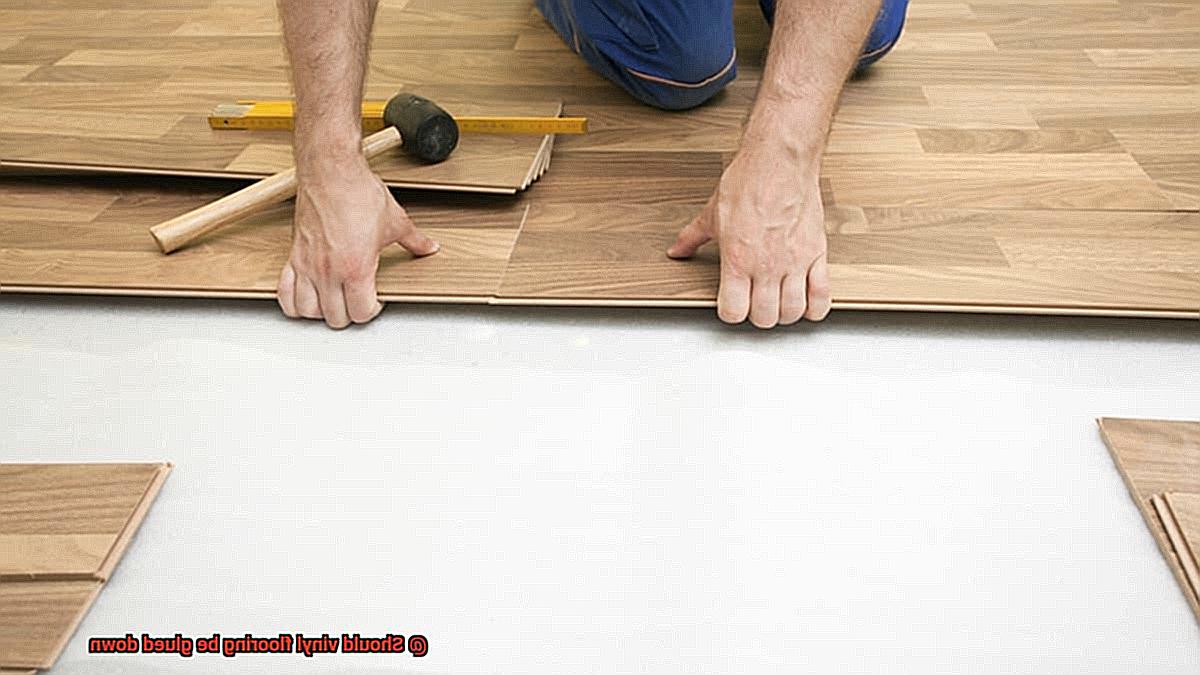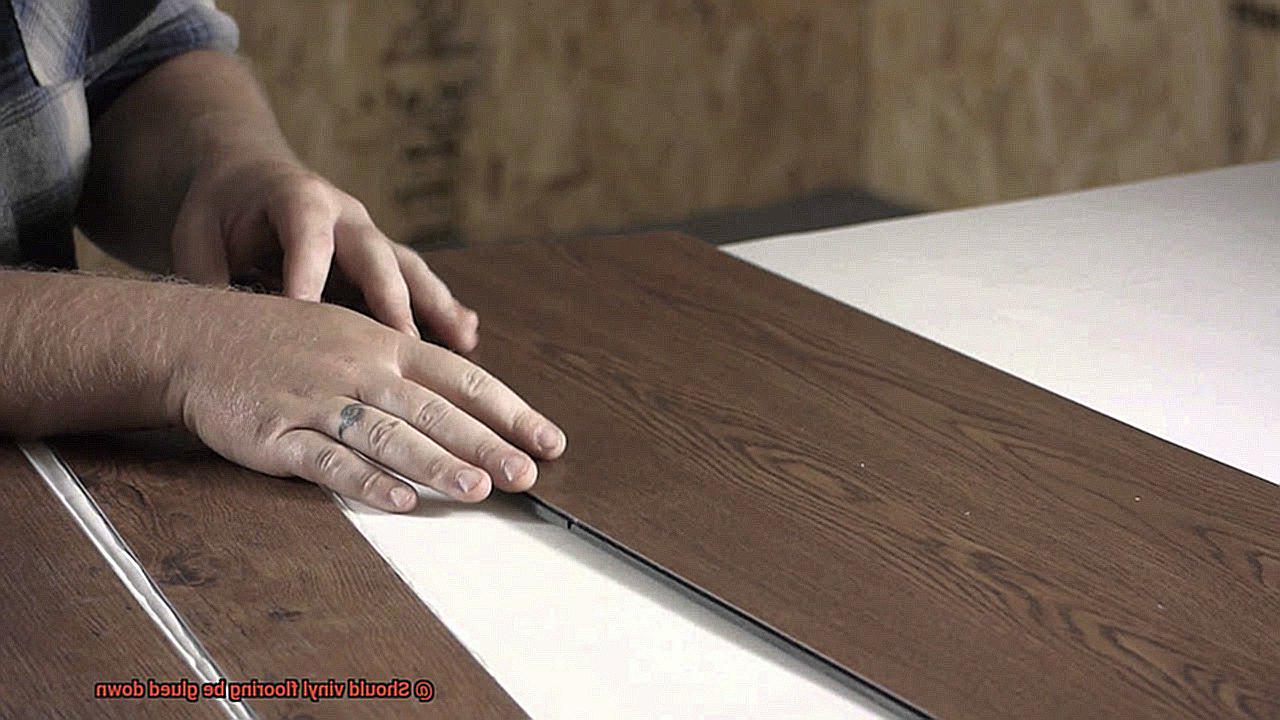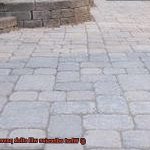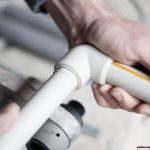Welcome to our blog post where we dive into the age-old debate of whether vinyl flooring should be glued down. If you’re thinking about installing vinyl flooring in your home or business, you might be wondering if gluing it down is the way to go. Vinyl flooring has a ton of perks, like its toughness, water resistance, and easy upkeep. But how you install it can make a big difference in how well it holds up over time.
There are pros and cons to gluing down vinyl flooring that you should think about before making your decision. On the plus side, gluing it down creates a super strong bond that keeps the flooring firmly in place, even in high-traffic spots. It also tends to feel more solid underfoot and reduces noise compared to floating installations.
But there are downsides too. One major concern is how tough it is to remove once it’s glued to the subfloor. Taking out or replacing glued vinyl flooring can be a real pain in the behind. Plus, gluing it down might require more time and skill during installation, which could mean shelling out more cash if you hire a pro.
In this blog post, we’ll explore everything from installation considerations and durability to cost implications and maintenance requirements when it comes to gluing down vinyl flooring. By weighing all the pros and cons, we hope to help you make an informed decision that fits your specific needs and preferences. So let’s jump right into the nitty-gritty of gluing down vinyl flooring and find out if it’s the perfect solution for you.
What is Vinyl Flooring?
Contents
- 1 What is Vinyl Flooring?
- 2 Advantages of Glue-Down Vinyl Flooring
- 3 Disadvantages of Glue-Down Vinyl Flooring
- 4 Alternatives to Glue-Down Vinyl Flooring
- 5 Installing Glue-Down Vinyl Flooring
- 6 Benefits of Floating Vinyl Floors
- 7 Factors to Consider When Deciding Between Floating and Glue-Down Installation
- 8 Conclusion
It is available in various types, including sheet vinyl, vinyl tiles, and luxury vinyl planks, each with its own installation requirements. One key decision you’ll need to make when installing vinyl flooring is whether or not to glue it down.
Glue-down vinyl flooring involves applying adhesive directly to the subfloor and then pressing the vinyl tiles or planks into place. This method provides a more permanent and stable installation, as the adhesive firmly bonds the flooring to the subfloor. Here are some important factors to consider when deciding whether to glue down your vinyl flooring:
- Stability and Durability: Gluing down your vinyl flooring ensures that it stays in place and doesn’t shift or move over time. This is particularly important in high-traffic areas or commercial settings where durability is crucial. If you want a long-lasting and stable installation, gluing down your vinyl flooring is a great choice.
- Moisture Resistance: Glue-down vinyl flooring offers better resistance to moisture compared to floating floors. The adhesive creates a moisture barrier, preventing water from seeping through the seams and causing damage to the subfloor. If you’re installing vinyl flooring in areas prone to moisture, such as bathrooms or basements, gluing it down can provide added protection.
- Sound Absorption: Glue-down vinyl flooring tends to perform better in terms of sound absorption compared to floating floors. The direct contact between the vinyl and subfloor helps reduce noise transmission, making it a suitable choice for apartments or multi-story buildings where sound insulation is important.
Despite these advantages, gluing down vinyl flooring also has some drawbacks that you should consider:
- Removal Process: Removing glued-down vinyl flooring can be labor-intensive and time-consuming. The adhesive residue left behind after removal may require additional effort to clean up. If you anticipate needing to replace or remove the flooring in the future, gluing it down may not be the best option.
- Subfloor Compatibility: Gluing down vinyl flooring may not be suitable for all types of subfloors. Some subfloors, such as concrete or plywood, may require specific preparation or priming before applying adhesive. It’s important to consult the manufacturer’s guidelines and recommendations to ensure compatibility with your subfloor.
- Alternative Installation Methods: Some types of vinyl flooring, such as luxury vinyl planks with click-lock systems, are designed to be floated over the subfloor without the need for adhesive. If you prefer a more flexible and easier installation process, floating vinyl flooring may be a better choice.
Advantages of Glue-Down Vinyl Flooring
This type of flooring offers durability, stability, moisture resistance, easy maintenance, a wide range of aesthetic options, and noise reduction properties.
One of the key benefits of glue-down vinyl flooring is its exceptional durability. The adhesive used to secure the flooring creates a strong bond, ensuring that the planks or tiles stay in place even under heavy foot traffic. This makes it an excellent option for high-traffic areas such as hallways, kitchens, and commercial spaces.
In addition to durability, glue-down vinyl flooring offers enhanced stability compared to other installation methods. Since the planks or tiles are securely glued to the subfloor, they are less likely to shift or move, providing a more stable surface for walking and furniture placement. This stability reduces the risk of tripping or slipping, making it a safer choice for households with children or elderly individuals.
Another advantage of glue-down vinyl flooring is its excellent moisture resistance. The adhesive used in the installation process creates a watertight seal, preventing water from seeping through. This makes it ideal for areas prone to moisture, such as basements, bathrooms, and laundry rooms. Additionally, the moisture resistance helps protect the subfloor from water damage, adding an extra layer of protection to your space.
Maintenance is a breeze with glue-down vinyl flooring. Its smooth and non-porous surface resists stains, spills, and dirt accumulation, making cleaning a simple task. Regular sweeping and occasional mopping are all it takes to keep your floor looking pristine. No need for special cleaning agents or techniques – just easy maintenance that saves you time and effort.
When it comes to aesthetics, glue-down vinyl flooring offers endless possibilities. It comes in various colors, patterns, and textures, including realistic wood or stone finishes. This means you can achieve the look and feel of hardwood or tile flooring without the high cost and maintenance requirements. Additionally, glue-down vinyl flooring allows for more creative freedom when it comes to creating unique patterns or designs on the floor, making it a versatile choice for interior design enthusiasts.
Last but not least, glue-down vinyl flooring is a great choice if you want to reduce noise in your space. The adhesive used in the installation process helps dampen sound transmission, reducing the impact of footsteps and minimizing the transfer of sound between floors. This is especially beneficial in multi-level buildings or apartments where noise can be a concern.
Disadvantages of Glue-Down Vinyl Flooring
When considering glue-down vinyl flooring, it’s crucial to be aware of the disadvantages that come along with its benefits. This type of flooring may seem like a dream solution for your home or office, but let’s dive into the drawbacks you should consider before making a decision.
First and foremost, the installation process can be a labor-intensive and time-consuming endeavor. Unlike other types of vinyl flooring that effortlessly snap together or use adhesive strips, glue-down vinyl demands a strong adhesive to secure it to the subfloor. This means you’ll have to invest extra time and effort in preparing the subfloor and applying the adhesive, turning what should be a simple task into a real hassle.
One major disadvantage of glue-down vinyl flooring is its stubbornness when it comes to removal and replacement. The adhesive creates such a strong bond with the subfloor that removing it without causing damage becomes an arduous task. If you ever want to update your flooring or repair any damage, brace yourself for the tedious process of removing both the old flooring and the adhesive.
Furthermore, glue-down vinyl flooring may not be suitable for all types of subfloors. It demands a smooth and clean surface for proper installation. If your subfloor is uneven or has imperfections, you’ll have to level or repair it before installing glue-down vinyl, adding extra time and cost to the installation process.
Moisture damage is another concern with glue-down vinyl flooring. Unlike other vinyl options, it can be more prone to damage if moisture seeps through the subfloor or if there are leaks or spills. The adhesive bond weakens under these circumstances, leading to lifting or warping of the flooring. To prevent this nightmare scenario, you’ll need to take extra precautions to keep moisture at bay.
Cost is another disadvantage worth mentioning. Glue-down vinyl flooring installation can be pricier compared to other types of vinyl flooring. Not only do you need to purchase the flooring material itself, but you also have to invest in high-quality adhesive and potentially additional tools or materials for subfloor preparation. These expenses can add up, making glue-down vinyl flooring a more expensive option.
Lastly, it’s worth noting that glue-down vinyl flooring may not provide the same level of comfort and insulation as other flooring types. It can feel harder underfoot and may lack noise reduction compared to options with built-in padding or underlayment. If you prioritize comfort and soundproofing, alternative flooring options might be more suitable.
Alternatives to Glue-Down Vinyl Flooring
- Floating Vinyl Flooring: Say hello to innovation. This alternative is designed to interlock and float above the subfloor, eliminating the need for adhesive. Not only is it easy to install, but it can also be effortlessly removed or replaced. The cushioning effect provided by floating vinyl flooring makes it an excellent choice for areas where moisture or humidity may be a concern.
- Peel-and-Stick Vinyl Flooring: Say goodbye to messy glue with this convenient alternative. Peel-and-stick vinyl flooring comes with an adhesive backing that simplifies the installation process. Simply peel off the backing and stick it to the subfloor. This option is perfect for renters or anyone looking for a quick and easy flooring solution that can be easily changed in the future.
- Click-Lock Vinyl Flooring: Looking for a secure and stable surface without the need for glue? Click-lock vinyl flooring is your answer. With its interlocking edges that snap together, installation is a breeze. This type of flooring can be installed as a floating floor, providing a seamless look and resistance to moisture.
- Loose-Lay Vinyl Plank Flooring: If you’re after a temporary or rental-friendly option, loose-lay vinyl plank flooring is perfect for you. It relies on friction and weight to stay in place, eliminating the need for adhesive. Installation and removal are quick and easy, making it a convenient choice for those who like to change things up.
- Self-Adhesive Vinyl Tiles: Want an option that combines simplicity with style? Look no further than self-adhesive vinyl tiles. These tiles come with a pre-applied adhesive backing, allowing for direct installation onto the subfloor. With a wide range of design options and durability, self-adhesive vinyl tiles are suitable for various areas in your home.

Preparing the Subfloor for Glue-Down Installation
Brace yourself for a flawless finish by giving your subfloor the attention it deserves. The unsung hero of your flooring endeavor, the subfloor, holds the key to stability and support. In this captivating guide, we delve into the art of preparing the subfloor for a glue-down installation that will leave you awestruck.
Cleanliness is Paramount:
The battle begins with a clean slate. Bid adieu to dirt, debris, and remnants of past flooring installations. A sweeping symphony or a vacuuming extravaganza sets the stage, while a damp cloth elegantly wipes away stubborn stains. Witness as a pristine surface emerges, ready to embrace the adhesive.
Conquering Unevenness:
A smooth sea awaits, as an even subfloor becomes your loyal ally. Sanding down lofty peaks and filling in sunken valleys with a magical floor leveling compound paves the way for uniform vinyl adhesion. Bid farewell to worries of bumpy flooring nightmares.
Moisture: The Sneaky Nemesis:
Enter the realm of moisture, where caution reigns supreme. Before embarking on your installation conquest, test your subfloor’s moisture content. Unleash the power of moisture meters or calcium chloride tests to unearth excessive dampness. Tackle this adversary head-on to protect your flooring’s future glory.
Shielding Against Invasion:
Prepare for battle against the relentless moisture army by fortifying your subfloor’s defenses. Enter the realm of vapor barriers and moisture barriers, guardians of your vinyl flooring’s sanctity. With these mighty shields in place, you can rest easy knowing water damage will never tarnish your masterpiece.
Smoothing Out Imperfections:
Step into the realm of perfection, where bumps dare not tread. With a straightedge as your trusty guide, embark on a quest to uncover any hidden discrepancies. Sand down the mighty mounds and fill in the treacherous pits, leaving a level kingdom in your wake.
Installing Glue-Down Vinyl Flooring
This remarkably durable and affordable flooring option is sure to elevate the look and feel of your space. But before you dive in, let’s walk through the steps to ensure a flawless installation that will stand the test of time.
Step 1: Prepare the Subfloor
First things first, take the time to prepare your subfloor properly. Think of it as laying the foundation for a masterpiece. Remove any dirt, debris, or imperfections, and ensure that the subfloor is clean, dry, and level. Trust me, this meticulous attention to detail will pay off in the end.
Step 2: Remove Baseboards
To achieve a truly professional finish, it’s best to remove the baseboards before installing your vinyl flooring. This allows for a seamless installation and ensures that the flooring is properly secured. Plus, it adds that extra touch of elegance to your space.
Step 3: Choose the Right Adhesive
Ah, the adhesive – the unsung hero of glue-down vinyl flooring installations. Different types of vinyl floorings require different adhesives, so consult the manufacturer’s instructions to select the perfect match for your chosen flooring. Don’t skimp on this step – using the wrong adhesive can lead to disaster.
Step 4: Apply the Adhesive
Armed with your chosen adhesive, it’s time to work your magic. Using a trowel or notched trowel, apply the adhesive evenly according to the manufacturer’s recommendations. Think of yourself as an artist spreading paint on a canvas – smooth strokes and even application are key to preventing any bubbling or lifting down the line.
Step 5: Lay Down the Vinyl Flooring
Now comes the exciting part – laying down your vinyl flooring. Carefully place each piece on top of the adhesive, ensuring a snug fit and smoothing out any wrinkles or bubbles as you go along. Take your time with this step – precision is the name of the game.
Step 6: Roll It Out
With the flooring in place, it’s time to roll up your sleeves and roll it out. Grab a weighted roller and go to town, applying firm pressure as you move across the entire floor. This step ensures that your vinyl flooring adheres properly to the subfloor, eliminating any pesky air pockets that may try to ruin your masterpiece.
Step 7: Allow for Curing Time
Give the adhesive ample time to cure before subjecting your new vinyl flooring to foot traffic or heavy objects. Depending on the adhesive used, this can take anywhere from 24 to 48 hours. Trust me, it’s worth the wait to see your vision come to life.
Benefits of Floating Vinyl Floors
Floating vinyl floors offer a multitude of benefits that make them a worthwhile flooring option to consider. Here are the key advantages that set them apart:
- Easy Installation: Unlike traditional vinyl flooring, floating vinyl floors require no adhesive or nails during installation. This makes them incredibly easy to install over various types of subfloors such as concrete, plywood, or existing flooring. Whether you’re a DIY enthusiast or simply looking for a hassle-free installation process, floating vinyl floors are the perfect choice.
- Versatility: With a wide range of styles, colors, and patterns available, floating vinyl floors offer unmatched versatility. Whether you want a classic wood look or a modern tile design, there is a floating vinyl floor option to suit your taste and complement your space perfectly.
- Durability: Floating vinyl floors are known for their durability. They are resistant to scratches, stains, and moisture, making them ideal for high-traffic areas like kitchens and bathrooms. Additionally, they are easy to clean and maintain, requiring only regular sweeping and occasional mopping.
- Comfort: The soft feel underfoot sets floating vinyl floors apart from other hard flooring options like tile or hardwood. This added comfort is especially beneficial for those who spend long periods standing or walking on the floor, reducing fatigue and discomfort.
- Sound Absorption: Floating vinyl floors excel at sound absorption due to their construction that includes an underlayment layer. This feature makes them an excellent choice for multi-story homes or apartments where noise control is essential.
- Budget-friendly: Floating vinyl floors offer an affordable alternative to hardwood or ceramic tile without compromising on aesthetic appeal. They provide a similar look at a lower cost, making them an attractive option for homeowners on a tight budget.
- Easy Replacement and Repair: In case of damage or wear over time, individual planks or tiles can be easily replaced without having to tear up the entire floor. This convenience and cost-effectiveness make maintenance and repairs hassle-free.


Factors to Consider When Deciding Between Floating and Glue-Down Installation
When it comes to vinyl flooring, the installation method you choose can greatly impact its performance and longevity. There are two popular options to consider: floating and glue-down installation. Each method has its own set of advantages and disadvantages, so it’s important to carefully evaluate several key factors before making your decision.
First and foremost, stability and durability are crucial considerations. Floating installation allows the vinyl planks or tiles to expand and contract with temperature changes, providing better stability in areas with fluctuating temperatures. On the other hand, glue-down installation creates a strong bond between the vinyl flooring and the subfloor, making it more suitable for high-traffic areas or spaces prone to moisture.
The condition of your subfloor is another important factor to consider. Floating installation is more forgiving when it comes to minor imperfections, such as small cracks or unevenness. The foam underlayment used in floating installation helps to smooth out these irregularities, providing a more even surface for the vinyl flooring. However, if your subfloor has major flaws or is not properly prepared, glue-down installation may be a better option as it creates a stronger bond and ensures a stable and even surface.
Sound transmission is another factor to consider. Floating installation with an underlayment helps to reduce noise transmission by absorbing impact sound, making it ideal for multi-story buildings or rooms where sound insulation is desired. Glue-down installation, on the other hand, creates a firmer floor surface, which can result in louder footsteps. If sound transmission is a concern, especially in areas such as bedrooms or home offices, floating installation may be a better choice.
Moisture resistance is also an important consideration, particularly in areas prone to spills or high humidity levels. Floating installation provides better moisture resistance as the foam underlayment acts as a barrier, preventing moisture from seeping through and reaching the subfloor. However, it’s important to note that floating installation is not completely impervious to water, and prolonged exposure or excessive moisture can still damage the vinyl flooring. Glue-down installation creates a more watertight seal, offering enhanced moisture resistance. If the area where the vinyl flooring will be installed is highly susceptible to water damage, such as bathrooms or kitchens, glue-down installation is generally recommended.
Finally, consider the level of installation flexibility you desire. Floating installation allows for easier removal and replacement of individual planks or tiles without damaging the subfloor. This can be particularly useful if you anticipate changes in your design preferences or if you want the ability to replace damaged sections. Glue-down installation, on the other hand, creates a permanent bond between the vinyl flooring and the subfloor, making it more difficult to remove or replace individual pieces.
Also Read: Is it best to glue vinyl flooring?
Conclusion
In conclusion, when it comes to the question of whether vinyl flooring should be glued down, there are several factors to consider. Gluing down vinyl flooring can provide a more secure and stable installation, especially in high-traffic areas or spaces prone to moisture. It can also help to reduce the risk of shifting or buckling over time. Additionally, glued-down vinyl flooring often offers better sound insulation and a more seamless appearance.
However, there are also some drawbacks to consider. Gluing down vinyl flooring can make it more difficult to replace individual tiles or planks if they become damaged. It can also require more time and effort during installation, as well as the use of potentially harmful adhesives.
Ultimately, the decision of whether to glue down vinyl flooring will depend on your specific needs and preferences. If durability and stability are top priorities for you, then gluing down the flooring may be the best option. However, if you value flexibility and ease of replacement, a floating installation method might be more suitable.
Remember to consult with a professional installer or manufacturer’s guidelines before making your decision. They can provide valuable insights and recommendations based on your unique circumstances.
In summary, while gluing down vinyl flooring has its advantages in terms of stability and appearance, it is important to weigh these benefits against potential drawbacks such as difficulty in replacement and environmental concerns associated with adhesives.






